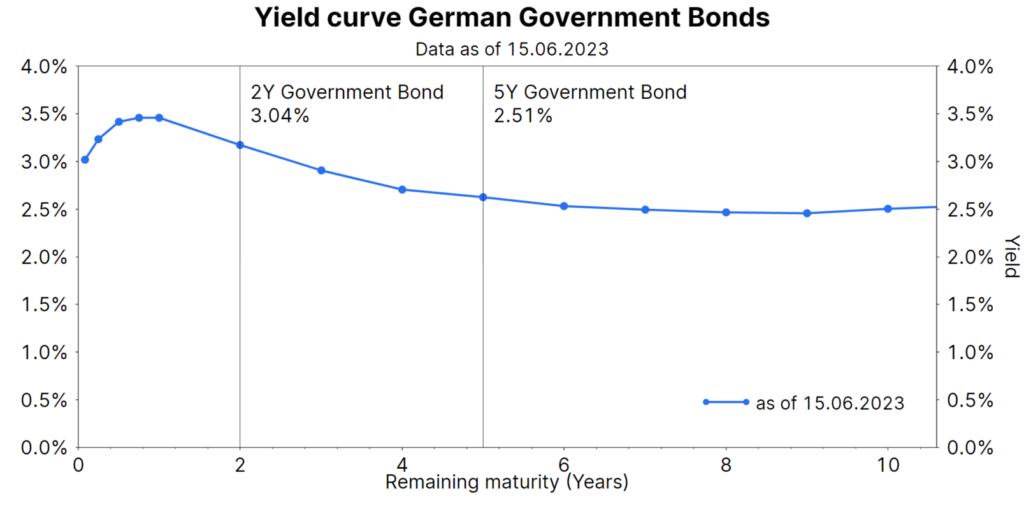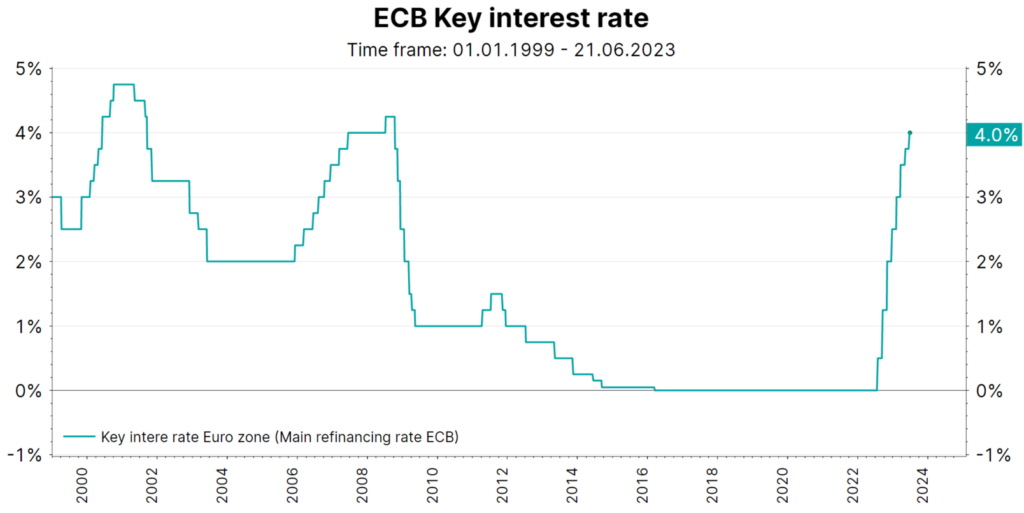Investing in the bond market means being able to
- at a certain point in time
- decide on a certain investment duration (maturity of the bond).
But when should one invest one’s capital in the bond market and which maturity would be preferable at that time? These questions are not so easy to answer and depend, among other things, on the preferences of the respective investor. In this article we would like to look at the current market environment for bonds and explain which maturity is currently preferred – and whether there are perhaps aspects that should be considered that are not immediately obvious at first glance.
The initial situation – from the point of view of a private investor
The following situation may sound familiar to many. In recent quarters, interest rates have risen and there is again the possibility to subscribe to individual new issues with a short maturity (often 2 to 3 years) and a fixed interest rate (coupon). Due to a lack of alternatives, investors often have no way of assessing whether this offer is attractive or not in the current environment. Private investors often use the issues of the recent past for comparison.
And even if there were several bonds with different maturities to choose from: Due to a lack of background knowledge, many investors tend to go for the bond with the shortest maturity. This is often based on the desire for security, which is “perceived” to be higher if the capital invested is returned quickly.
The bond market has more to offer than just a single bond
If you want to get an overview, you should proceed systematically. That means:
- start with the highest quality and look …
- … what yields can be achieved here for a spectrum of different maturities.
German Bunds represent the highest quality in the Eurozone, but also offer the lowest yields. Other government and corporate bonds have to pay a corresponding yield premium (spread) due to their lower quality.
Let us therefore take a look at the current yield (as of 15.06.2023) of German government bonds with different remaining maturities. This information can be viewed as a table, or better (because it is easier at first glance) as a chart. The chart on which the yield is plotted on one axis and the maturity on the other is called the yield curve.
The following chart shows the current yield curve starting with a few months up to 10 years to maturity.

Chart: Yield curve of German government bonds with up to 10 years to maturity; Source: Refinitiv Datastream, as of 15.06.2023; Note: Representation of an index, no direct investment possible. Past performance does not allow reliable conclusions to be drawn about future developments.
Each point on the chart represents a bond with the corresponding remaining term to maturity (x-axis) and the associated yield (y-axis). In the chart we have highlighted 2 maturities as examples. The first bond has two years to maturity and offers a yield of 3.04%. The second has 5 years to maturity and a yield of 2.51%.
We thus currently have an unusual but interesting market environment. For the shorter maturity, investors:inside receive a higher yield than for a longer maturity. One would expect a correspondingly higher yield for a longer commitment.
We have connected the points with a line and thus plotted a curve – the so-called yield curve. In technical jargon, the current situation is called an “inverse yield curve”. The opposite would be a “normal yield curve”, where a longer maturity would also have a higher yield.
Can an investment decision be made now?
Let us assume that there are currently only the following two investment options: Bond (A) is the one with a 2-year maturity and approx. 3% yield and bond (B) has a 5-year maturity and approx. 2.5% yield.
At first glance, bond (A) offers the more attractive alternative. In practice, most investors will therefore opt for this bond.
But we ask an interesting question at this point:
- “Is 2 times 3% (in total 6%) really better than
- 5 times 2.5%?” (in sum 12.5 %)
If you choose the first bond with a 2-year maturity, you need a bond with a total return of 6.5% for the following 3 years, i.e. about 2.2% per year.
The crucial question is thus:
- “Where will interest rates be in 2 years?”
Such an assessment is very difficult, because the interest rate market can change very quickly. How quickly, we would like to show in the following.
How quickly can the interest rate market change?
The central banks have a very high influence on the development of the bond markets with their decisions regarding the key interest rates. The following chart shows the development of the key interest rate in the Eurozone, which is set by the European Central Bank (ECB).

Source: Refinitiv Datastream, as of 21.06.2023; Note: Representation of an index, no direct investment possible. Past performance does not allow reliable conclusions to be drawn about future developments.
The chart shows very well how quickly significant changes can occur. As recently as June 2022, the key interest rate was 0% and was raised in several steps to 4% in June 2023 – i.e. within a year.
As interest rates have risen, they can also fall again at the same pace, as can be seen in the chart based on the years 2008/09. The yield of bonds with a short remaining term to maturity is very closely aligned with the current key interest rates.
Summary: The special charm of bonds with short residual maturities
In the last few years, with key interest rates around the zero line, there were hardly any attractive offers for investors in short-dated bonds. After the interest rate hikes of the last quarters, there are always issues with interesting conditions in the current environment.
For private investors, every investment decision in the bond market is associated with a certain degree of uncertainty, because:
- Should one prefer a shorter or longer maturity? In order to be able to make such a decision (with a given investment horizon), not only the current interest rate level is relevant. Rather, investors should also have an assessment of the development in the coming years.
- An assessment of where interest rates might be in 2 or 3 years’ time, given an interest rate market that can change very rapidly in a very short time, is certainly not an easy thing to do!
- However, bond investments with a short investment period are an excellent way to take the first steps from saving to investing, to gain experience and “learn” to make investment decisions.
Note: Please note that investing in securities also involves risks in addition to the opportunities described.
Legal note:
Prognoses are no reliable indicator for future performance.
For a glossary of technical terms, please visit this link: Fund Glossary | Erste Asset Management

